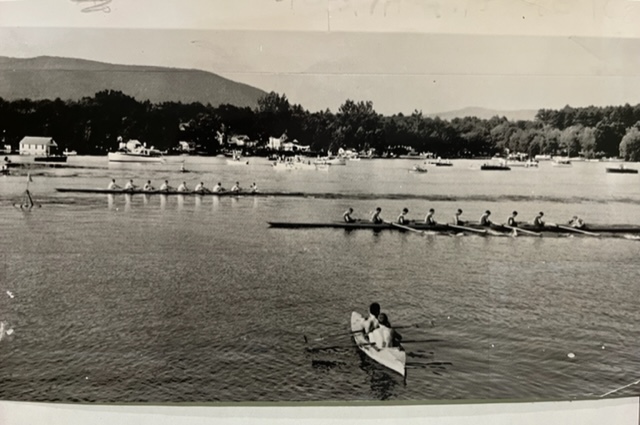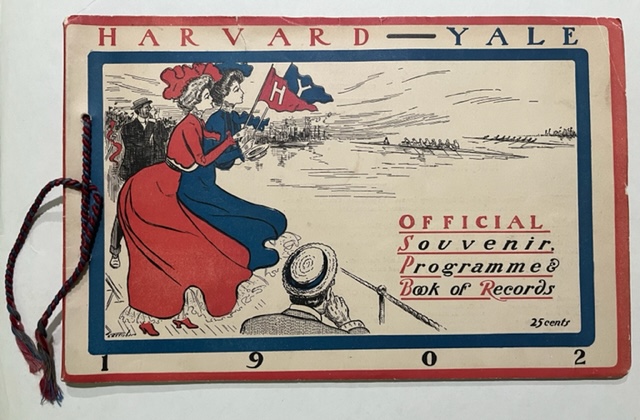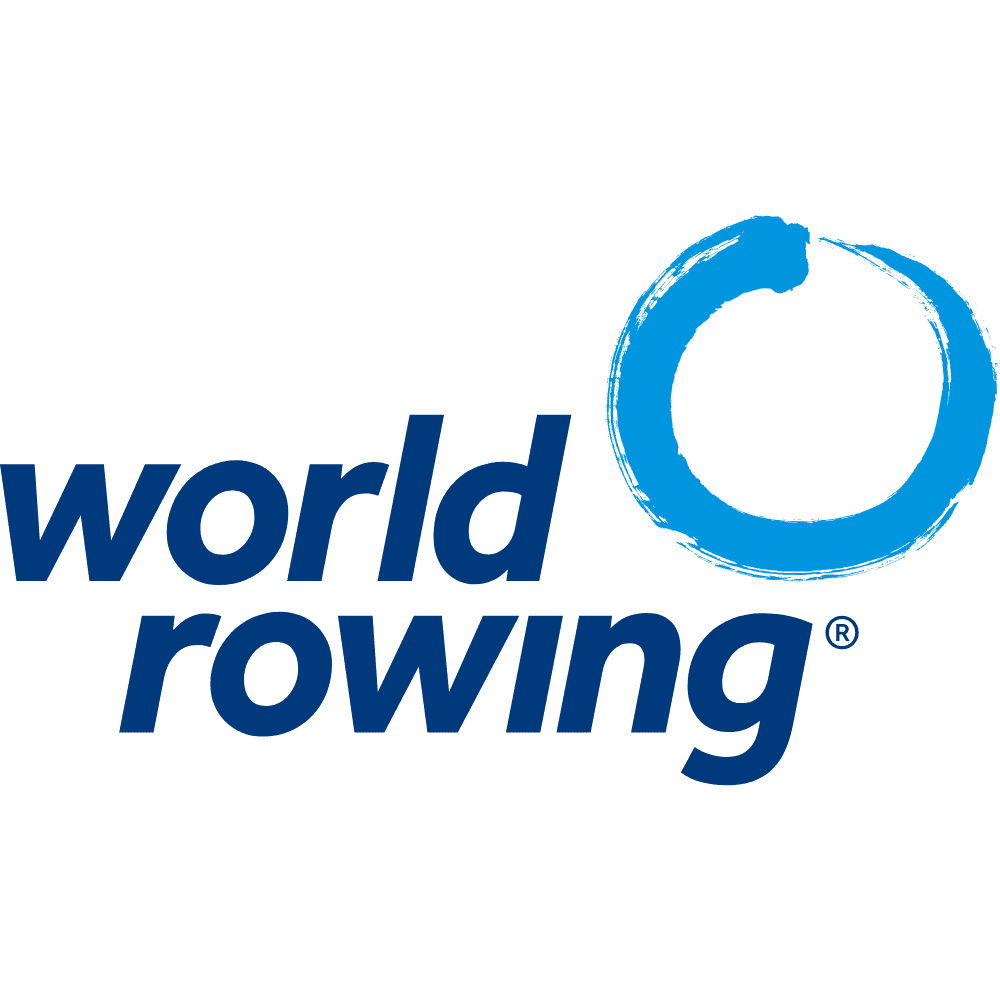
02 Sep 2022
“The Race” – how Yale and Harvard kick-started US College Sport 170 years ago this month
August 2022 marked an important 170th anniversary in the history of rowing. The year was 1852 and crews from two opposing universities met head to head for the first time to test their skill at the oar. Although not so old as Britain’s Oxford-Cambridge Boat Race (first rowed 13 years earlier), students at two American universities (Yale and Harvard) decided to hold their own race. It turns out that this contest, sometimes called simply “The Race”, was the first sport competition between different universities in a nation where college sport today is central to American identity.
To find out more, World Rowing spoke with two notable alumni. First, Canadian Olympic Champion Malcolm Howard is one of the few rowers to race and win the Harvard-Yale race and the Oxford-Cambridge race (with Oxford). He shares some reflection on The Race and its more famous counterpart. Second, historian and Yale alumnus Thomas Weil explains the origins and significance of the Harvard-Yale race.
SURROUNDED BY HISTORY
To participate in the Yale-Harvard race is to be surrounded by history, reflects Malcolm Howard, whose time at Harvard included multiple successful races against Yale in the early 2000s. “The biggest part of Harvard-Yale history and experience is the place itself, Red Top,” he says, referring to Harvard’s training headquarters at the long-time race venue along the River Thames in New London, Connecticut, part way between the two universities. Yale’s home base at the site is called Gale’s Ferry. For generations, these have served as second homes for the rowers in the weeks leading up to the competition.
Encounters with that rich history are unavoidable. Mental images Howard carries with him include “the wooden shell that is still up on the top rack and stays there because it broke a Yale winning streak.” Or “the inch of paint that is on the rock, from previous winning years,” he adds, speaking about a prominent rock beside the course ritually painted in Yale blue or Harvard crimson.
“Oxford-Cambridge is a different beast,” says Malcom, who was part of Oxford’s winning boats in 2013 and 2014. “It is your only focus for the whole year, and for that week on the tideway everyone pays attention. Harvard-Yale is [also] a race with [a] long tradition, it’s just hidden away.”
SETTING THE SCENE
Fortunately, Thomas Weil has spent a lifetime investigating the history of this and other significant aspects of rowing in the United States, something he was happy to share with World Rowing as we mark the 170th anniversary of the event that kicked off what has become a multi-billion-dollar industry and changed the face of US and global sport.

As the sport of rowing was growing rapidly in the United Kingdom with the founding of major events such as the Boat Race (1829) and Henley Royal Regatta (1839), rowing on the other side of the Atlantic Ocean was slowly progressing. “Amateur clubs were formed in the New York area in the 1830s, and races were well publicized,” says Weil, “so the idea was not novel when some Yale classmates bought a boat and established the first collegiate boat club in 1843. Harvard followed the next year.”
Although university rowing in those days was more focused on exercise or social outings, there were intramural regattas where students could race other students within the same school. This was also the age of rail and steam, so it is significant that the decision to hold a Harvard-Yale contest was made on board a train.
“Yale oarsman James Whitson proposed it to railroad agent James Elkins as the train passed Lake Winnipesaukee in the summer of 1852,” says Weil. “Seeing an opportunity to sell train tickets and draw crowds to a potential resort at the lake, Elkins said, ‘If you will get up a regatta on the lake between Yale and Harvard, I will pay all the bills.’ Thus what has long been recognized as one of the great amateur sports began with the commercial sponsorship of a railroad.”
THE RACE – EARLY YEARS

“The 1852 event, which included two Yale eights and a four and one Harvard eight was the only race to take place at Winnipesaukee,” says Weil of that first race. When it came to boat size, however, eights did not standard until 1876 and the matchup was not always even.
At their second meeting, in 1855 “Harvard brought a coxed eight and a straight four, while Yale showed up with two coxed sixes,” Weil explains. Not surprisingly, Harvard won. The next race was in 1859 where, says Weil, “Harvard raced a straight six against Yale’s coxed six.” Harvard won again the next year with their coxless crew. The US Civil War (1861-1865) halted racing for a while. When it resumed in 1864 “the schools were at least competing in similar craft, straight sixes,” says Weil.
By 1869 the regatta was attracting the attention of other universities; when Harvard travelled across the Atlantic for the first international university rowing contest against Oxford in London, rowing-fever stuck across America.
“Other colleges quickly jumped on the rowing bandwagon and sought an inclusive championships regatta with Yale and Harvard,” Weil says. But as the race expanded, Yale and then Harvard opted out and returned to their exclusive dual in 1876, racing in coxed eights over a four mile (6437 metres) straight course. With only a few world war and global pandemic related interruptions, this format has continued right up to today. As for the score, in the course of 155 races, Yale stands at 58 wins and Harvard at 95. One race was a tie (1902) and another (2016) was eventually declared “no race” after Harvard sank in heavy weather. More on that race here.
Thank you to Thomas E Weil and Malcolm Howard for their contributions to this story.

